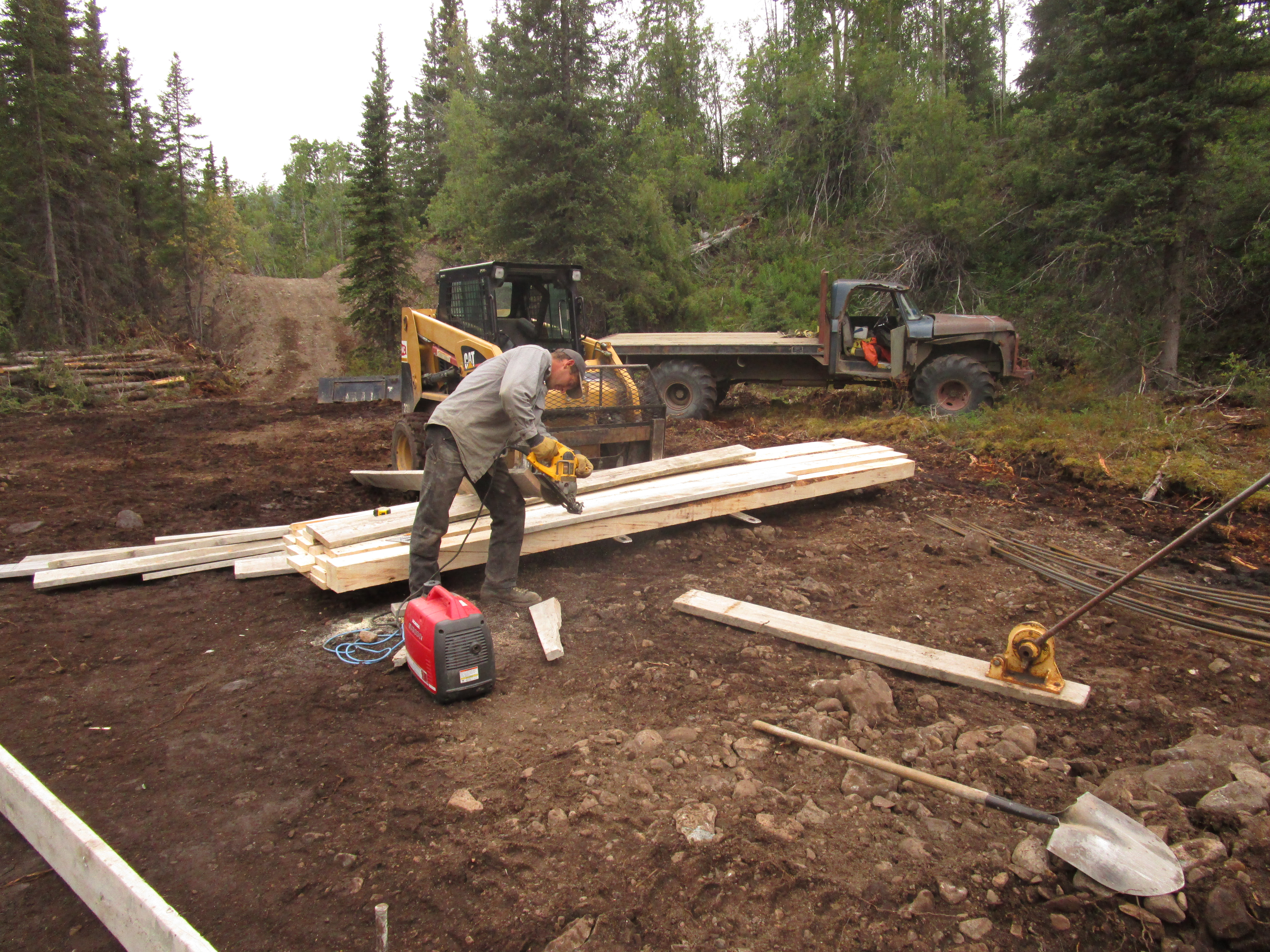Power Tools & Equipment
In order to efficiently build a dovetail
log cabin, it is necessary to utilize diesel
equipment to lift and carry logs, trucks to
transport materials, gas generators to make the
necessary electricity to run power tools, and
power tools such as saws, drills, and routers,
to cut and shape the wood.
Generators
On most construction sites, it is common to
see either a big generator powering the
job site, multiple smaller generators
powering the job site, or just one single
smaller generator producing the needed power to
run the job site. When I say smaller or bigger
generators, I am not talking about physical
size, but am instead talking about the power
output in terms of watts. For example, portable
Honda generators come in sizes such as
2000i, 3000i, 5000, 7500i... where the
number indicates the number of watts the
generator produces. Also, for Honda generators,
the "i" after the watt output indicates that the
generator is equipped with a sine wave
converter. The sine wave converter works by
converting the Direct current that the generator
is producing into clean alternating current that
most power tools require. According to
electricgeneratordopot.com The sine wave
converter stands apart from other converters on
portable generators, because the power it
produces comes in a very clean sine wave instead
of an otherwise rough sine wave. It is important
to have the clean sine wave when charging
sensitive equipment such as cell phones and
computers in order to keep them from crashing.
Power tools however, are not as sensitive, and
do not require as clean of electricity.
Trucks and Equipment
Trucks and power equipment work
similar to generators, in that they have a
petroleum powered engine to run them. Instead of
converting the power to electricity, the power
is generated to gearboxes and drive-lines to
provide power for the wheels to turn, or it is
used to run hydraulic pumps which in turn run
hydraulic rams which are used for such things as
lifting logs or moving materials around the
jobsite.
Efficiency
The gasoline powered engine that runs most
portable generators is sadly not very efficient.
In order for the engine to run, there is lots of
wasted energy which usually comes in a couple of
different forms. Exhaust is the most notable and
visible form of wasted energy. Exhaust is simply
unburned, or partially burned fuel that was not
able to fully combust. Heat requires temperature
to increase, so when a generator gets hot from
running a long time, or when the exhaust is hot,
we can conclude that the generator had to work
to produce power that was transformed into heat
energy. It can be observed that most generators
are quite loud when they are running. That is
because sound is also a form of wasted energy
that the generator has to work to produce. In
order to determine the amount of work an engine
will output, physicists use a formula that
states that the coefficient of performance is
equal to the work outputted divided by the work
inputted. So if an engine outputs 1000 watts,
and has a coefficient of performance of .5 it
would have to have an input of 2000 watts. P =
RI^2
Power Tools
Most power tools that are used to build a
dovetail log cabin utilize an electric motor
which requires power from the generator to power
them. The power necessary to run
the electric motor can be found using the
equation P
= RI^2
where P = power, R = resistance, and I =
amperage (Physics for scientists and
engineers P. 913). The electric motor acts
like a big resistor, and amperage is usually
given, or can be easily obtained with a
multimeter. So if the values of amperage and
resistance are known the power output can be
determined by solving the simple equation.
Knowing the power needed to run a given tool
can be important for deciding what size
generator to purchase, or how much it will
cost per kilowatt hour to run the tool off
of city power for a given amount of time.
 

Photo courtesy of the author.
-
The above photos
show some different types of power
equipment and power tools that would be
commonly found at a house building site.
The first photo shows an electric router
which is being powered by a 2000i Honda
generator in order to provide a rounded
corner on the dove tailed log. There is
also a gasoline powered chainsaw in the
picture that is used to cut the dove tail
in the log. The
second photo shows the same Honda 2000i
generator powering a circular saw to cut a
form board down to the proper length. Also
in the picture is a skid-steer, which is
utilizing a diesel engine to power
hydraulics to lift and carry form boards
to the sawyer. The last picture shows the
same skid-steer with a man-basket on the
forks for lifting tools and people up to
where construction is taking place.
Home Sweet Home
Next Page
Previous Page
|